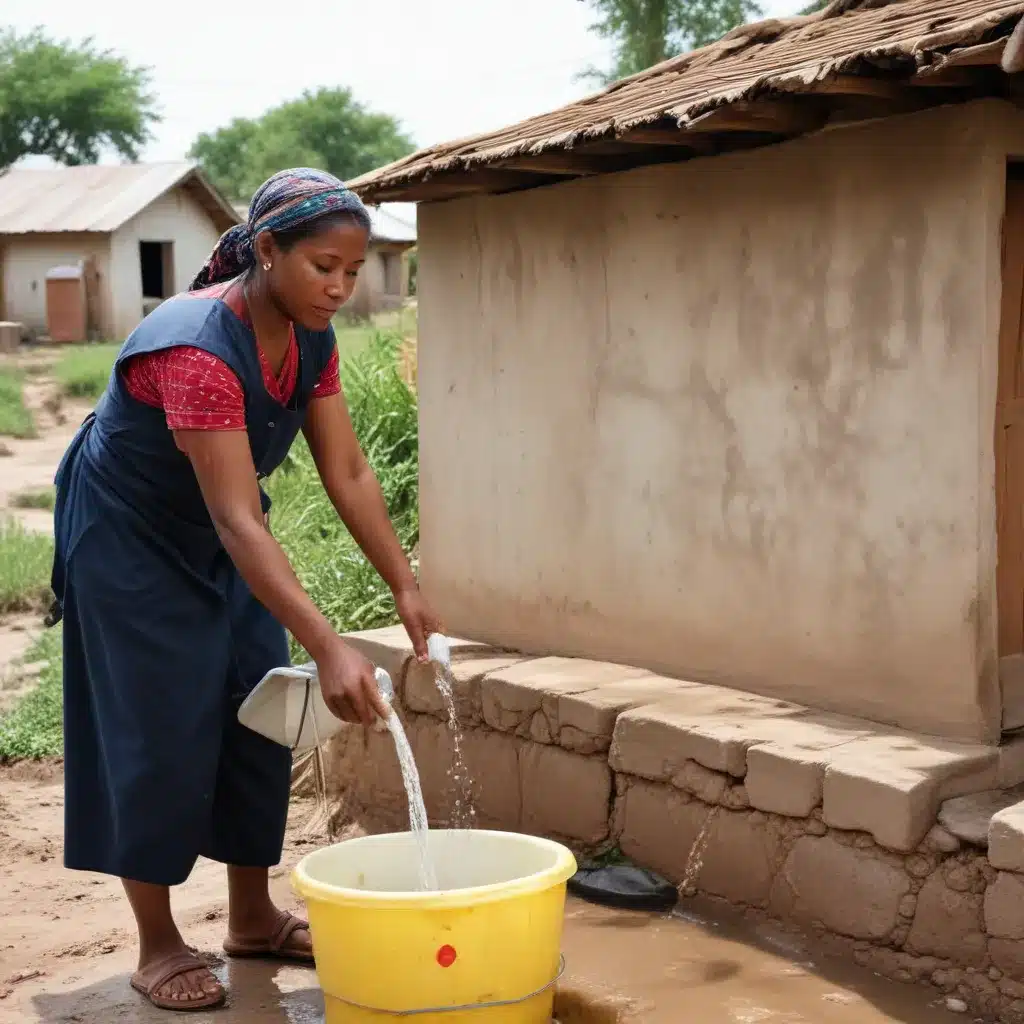
The Importance of Holistic Approaches to Community Resilience
As a seasoned expert in water and sanitation services, community engagement, and advocacy, I have witnessed firsthand the critical role that integrating disaster risk reduction (DRR) into community-based water, sanitation, and hygiene (WASH) programs can play in building resilient and sustainable communities. In a world increasingly affected by the impacts of climate change and natural disasters, this holistic approach has become essential for safeguarding the well-being and livelihoods of vulnerable populations.
Disasters, whether sudden-onset events like floods and earthquakes or slow-onset crises like droughts, can have devastating consequences on WASH infrastructure and service delivery. When water systems are damaged, sanitation facilities become unusable, and hygiene practices are disrupted, the risk of waterborne diseases and public health emergencies skyrockets. This, in turn, can exacerbate existing vulnerabilities and undermine hard-won development gains.
However, by proactively integrating DRR strategies into community-based WASH programs, we can empower local communities to mitigate the effects of these disasters and bounce back more quickly. This approach not only strengthens the physical infrastructure but also enhances the social and institutional capacities within communities to prepare for, respond to, and recover from crises.
Leveraging Community Engagement and Partnerships
One of the key principles of effective community-based WASH programs is the active engagement and participation of local stakeholders. By involving community members, including vulnerable groups, in the design, implementation, and monitoring of WASH initiatives, we can ensure that the interventions are tailored to their specific needs and priorities.
This participatory approach is equally crucial when it comes to integrating DRR. By working closely with communities, we can better understand their perceptions of disaster risks, their coping mechanisms, and their existing knowledge and resources. This insights can then inform the development of contextualized DRR strategies that leverage local capacities and build upon existing community resilience.
Moreover, forging strong partnerships with local authorities, civil society organizations, and other key stakeholders is essential for aligning community-based WASH and DRR efforts with broader disaster management and climate adaptation plans. These collaborations can facilitate access to technical expertise, financial resources, and policy support, ultimately enhancing the sustainability and scalability of the integrated approach.
Strengthening WASH Infrastructure and Services
At the core of any resilient community-based WASH program is the provision of reliable and climate-proof water and sanitation infrastructure. This means designing and constructing WASH facilities that can withstand the impacts of natural hazards, such as floods, storms, and droughts. This may involve measures like elevating latrines, using corrosion-resistant materials, or incorporating backup water sources.
Equally important is ensuring the continuous functionality of these WASH services, even in the face of disasters. This can be achieved through robust operation and maintenance (O&M) systems, as well as the establishment of community-based management structures, such as WASH user committees or facility management groups. By empowering local actors to take ownership of WASH infrastructure, we can enhance the long-term sustainability of these critical services.
Furthermore, integrating DRR into WASH programs should extend beyond physical infrastructure to include the development of early warning systems, emergency preparedness plans, and disaster response protocols. This can help communities anticipate and mitigate the impacts of impending crises, ensuring the continued provision of essential WASH services during and after a disaster.
Fostering Health, Hygiene, and Livelihoods
Disaster risk reduction in the context of community-based WASH programs must also address the broader social and economic dimensions of resilience. This includes strengthening health and hygiene practices, as well as supporting the livelihoods of vulnerable households.
By integrating hygiene promotion and disease prevention activities into DRR strategies, we can equip communities with the knowledge and skills to maintain optimal WASH practices even in the face of emergencies. This can involve training community members as hygiene promoters, establishing handwashing stations in strategic locations, and disseminating critical information on safe water handling and sanitation during disasters.
Moreover, the integration of livelihood support into DRR-WASH programs can help communities diversify their income sources and reduce their vulnerability to the economic impacts of crises. This may include the provision of agricultural extension services, skills training, or access to financial services, empowering households to withstand and recover from the shocks and stresses they face.
Amplifying Youth Engagement and Empowerment
Young people, as agents of change, play a crucial role in the success and sustainability of integrated DRR-WASH initiatives. By engaging youth in the design, implementation, and monitoring of these programs, we can tap into their energy, creativity, and technological savvy to drive innovative solutions.
Initiatives that provide youth with opportunities for sports, arts, and performance can not only foster their personal development but also serve as platforms for disseminating critical information on disaster preparedness, water conservation, and hygiene practices. Furthermore, equipping youth with life skills and leadership training can empower them to take on active roles in their communities, championing the integration of DRR and WASH as a means of building resilience.
Conclusion: Towards a Resilient and Sustainable Future
By integrating disaster risk reduction into community-based WASH programs, we can create a more holistic and sustainable approach to safeguarding the well-being of vulnerable populations. This integrated approach, which leverages community engagement, strengthens WASH infrastructure, promotes health and livelihoods, and empowers youth, is essential for building resilient communities capable of withstanding and recovering from the impacts of natural disasters and climate change.
As we navigate the challenges of the 21st century, it is imperative that we continue to learn from the successes and lessons of programs like the Integrated Community-Based Risk Reduction (ICBRR) initiative in Timor-Leste. By sharing best practices, fostering cross-sectoral collaboration, and amplifying the voices of local communities, we can work towards a future where no one is left behind, even in the face of the most daunting environmental and humanitarian crises.
To learn more about the Joint Action for Water initiative and how you can get involved in integrating disaster risk reduction into community-based WASH programs, please visit our website or reach out to us at [email protected].

